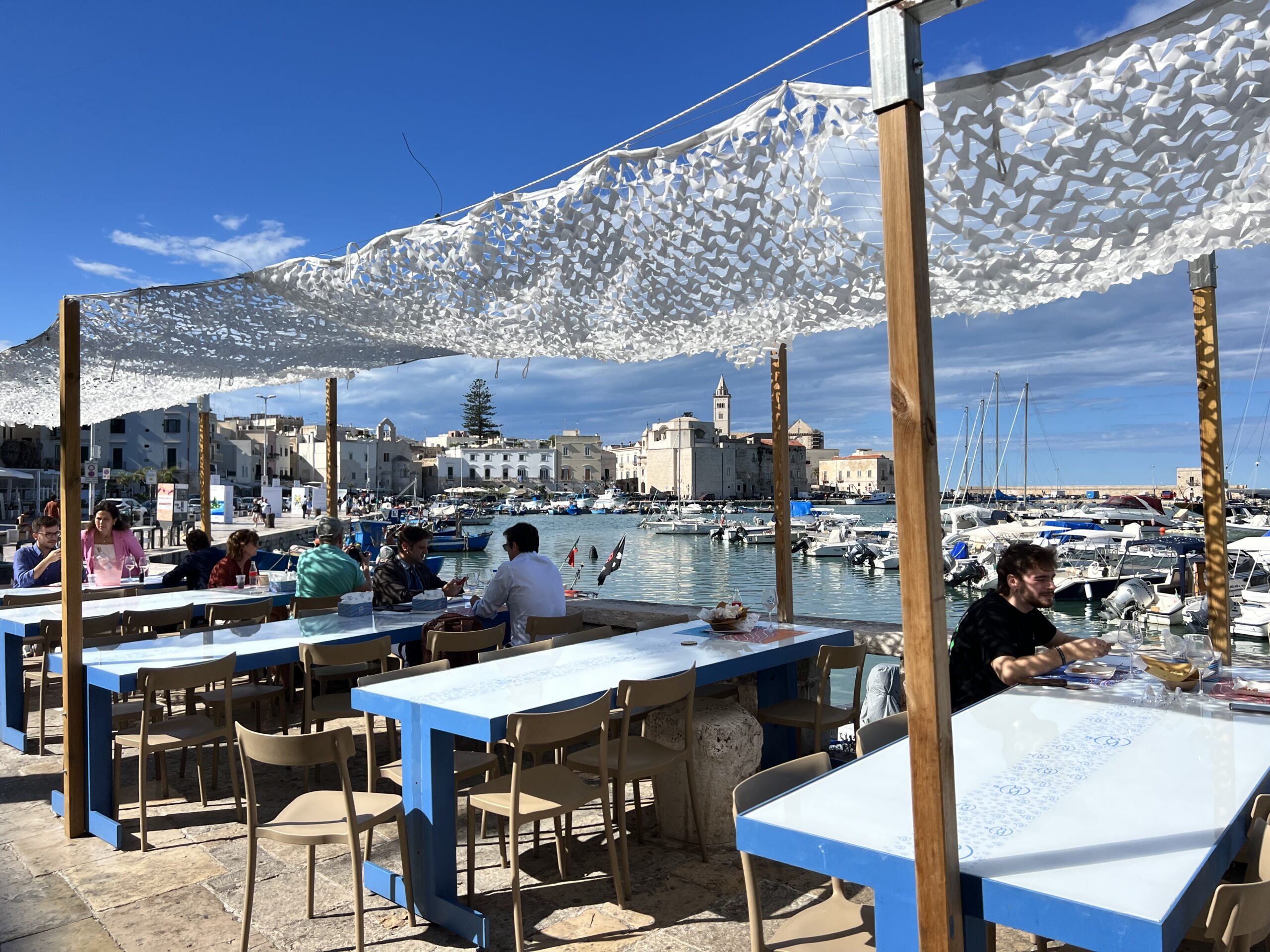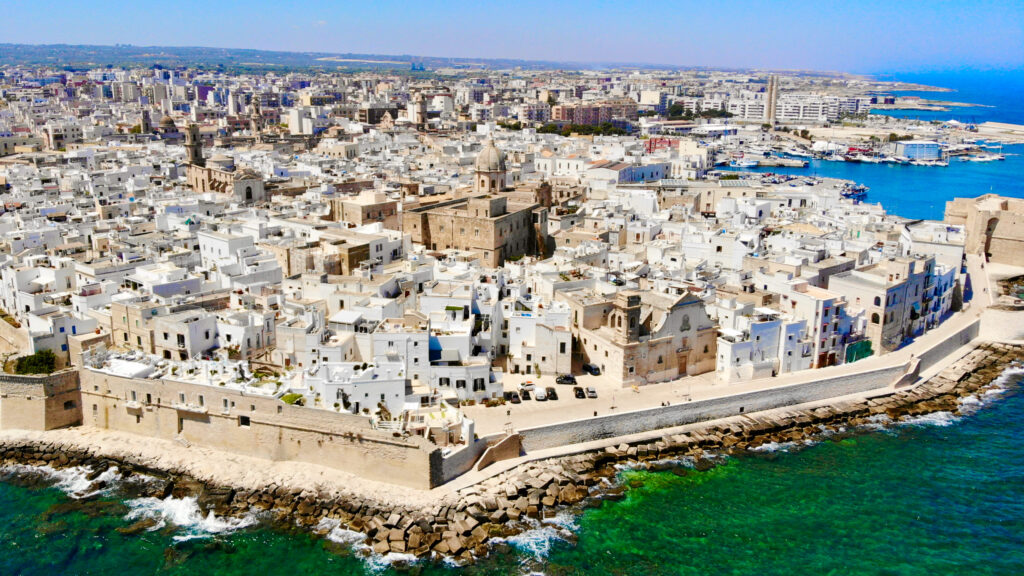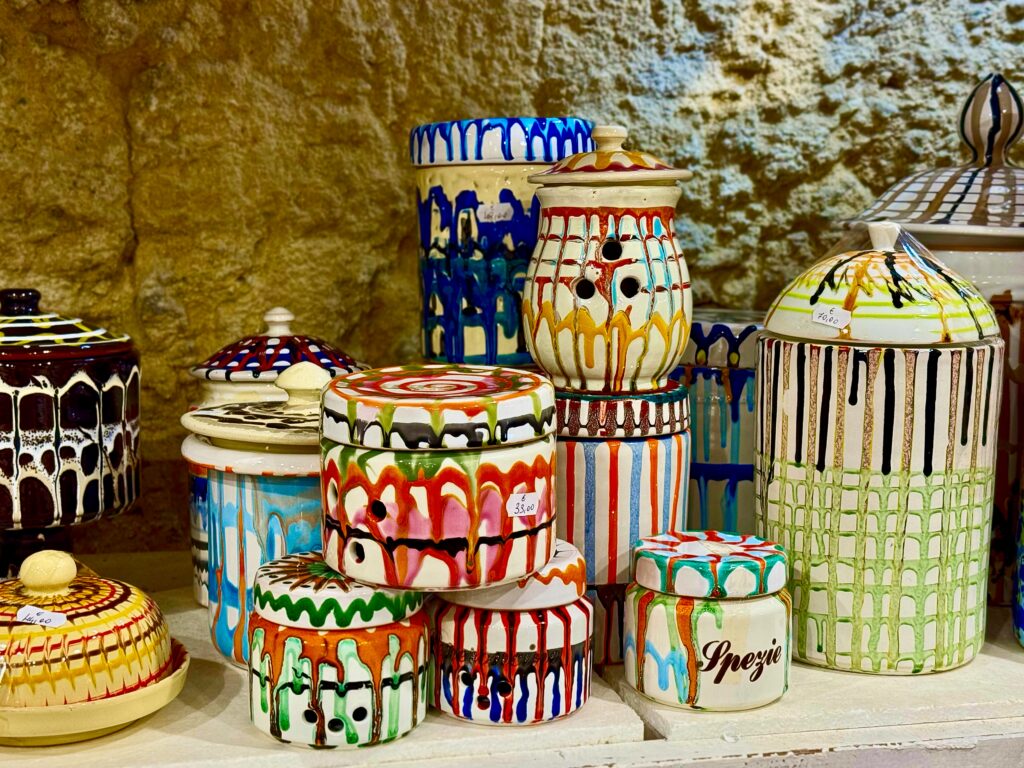A Town Between Land and Sea
Trani, a historic coastal town about 45 minutes north of Bari, is best known for its magnificent seafront cathedral, an iconic landmark for sailors navigating the Adriatic. The town flourished between the 11th and 13th centuries as a key commercial hub and departure point for the Crusades. It established strong ties with Italy’s Maritime Republics and was home to southern Italy’s largest Jewish community.
The scenic road from Bari to Barletta reveals the dual nature of many of Puglia’s seaside towns, including Trani—where a historic waterfront district meets a more modern inland expansion. Trani’s coastal side is framed by specialised farmland and elegant villas and farm estates from the 18th to 20th centuries. Inland, the landscape quickly shifts to industrial scenes of metal frames, stone blocks, and sawmills.
A History Etched in Stone
Trani’s origins trace back to the 3rd century, when it was recorded as “Turenum” in the ancient Tabula Peutingeriana. Over time, it evolved into a fortified stronghold shaped by Lombard and Byzantine influences. Raids during Saracen control of Bari made fortification urgent. The early medieval castrum walls stretched beyond the eastern harbour, enclosing a slight rise in the landscape and opening to the sea only via Porta Vassalla. By the 11th century, Trani began to rebuild along a “via antiqua“—now Via Mario Pagano—later restructured by Frederick II in the 13th century with new walls and a castle.
The earlier defensive perimeter included four gates, of which only one, Porta Nuova (also known as Porta Aurea), survives intact. The medieval town was structured into districts, marked by prominent buildings and culminating at the promontory on which the cathedral stands.
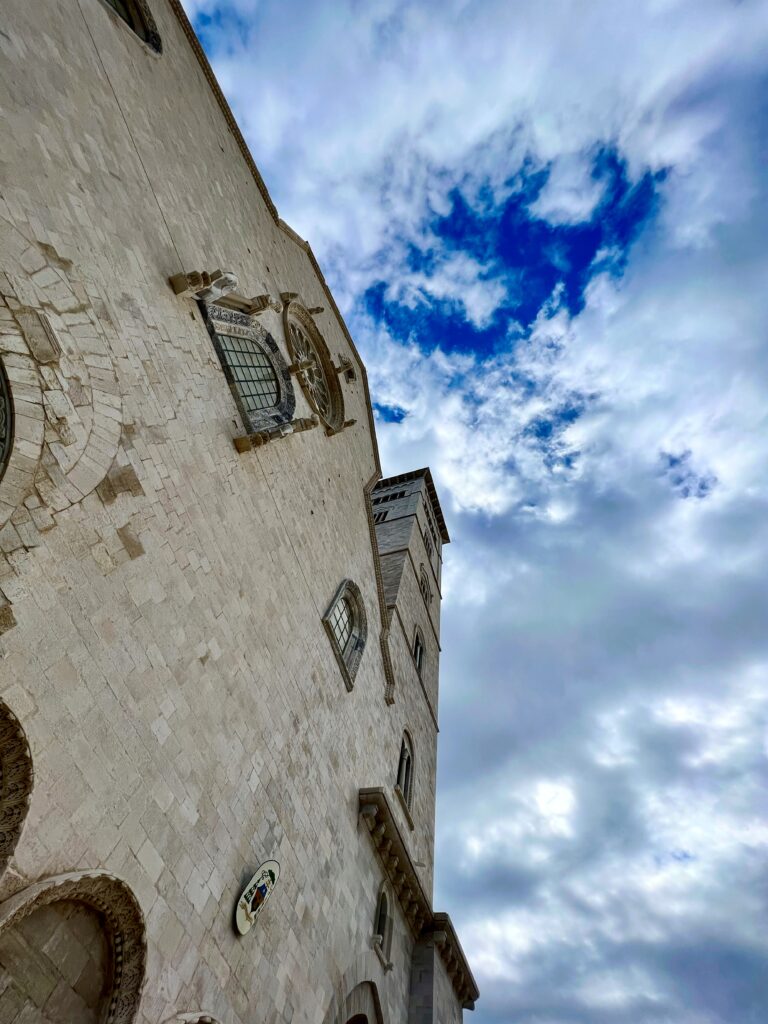
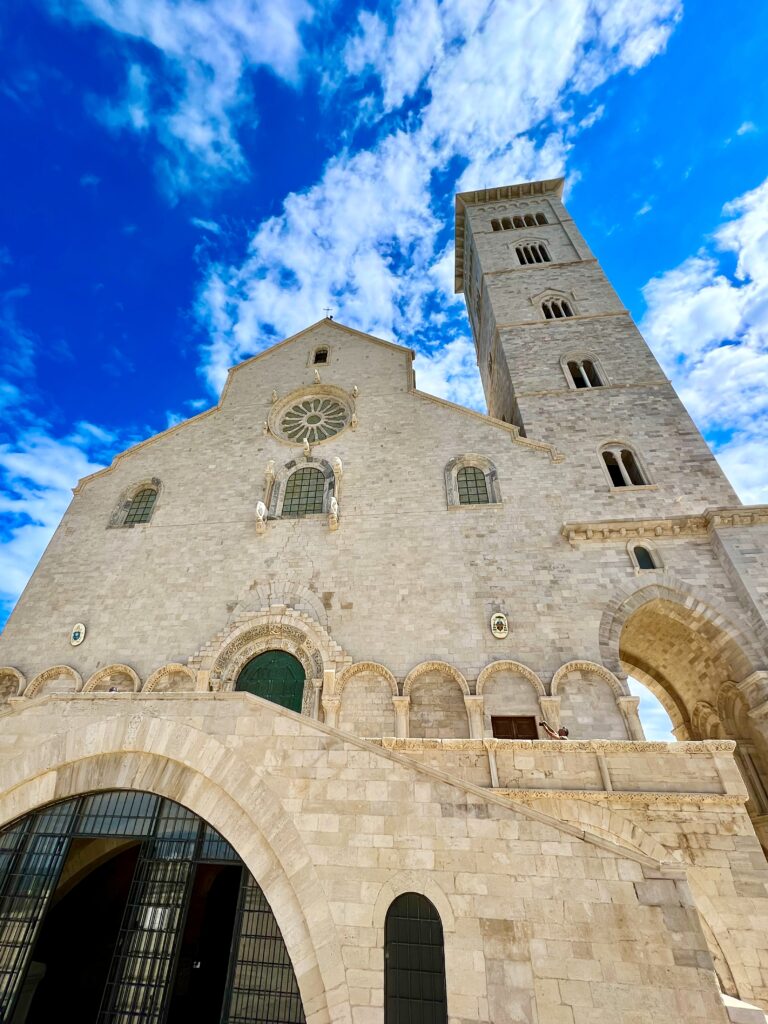
The Cathedral of San Nicola Pellegrino
Trani’s most iconic landmark, the Cattedrale di San Nicola Pellegrino, dominates the waterfront, its dramatic isolation due to 1950s restorations.
Excavations reveal an earlier 5th–7th-century church beneath the current site. The Romanesque cathedral, begun in 1159 and dedicated to San Nicola Pellegrino, was largely complete by 1186. It was built atop two earlier churches and completed in stages through the late 13th century. The 60-metre bell tower was completed in 1239.
The façade, richly decorated with sculpture, arabesques, monsters, and saints, features a central bronze portal with 32 panels—30 of sacred and profane scenes, plus two intertwined serpents. To the right rises the bell tower, a masterpiece by Nicolaus sacerdos et protomagister.
Inside, the basilica plan includes three longitudinal naves, a transept, and three apses. The central nave is wider and separated by 24 paired columns. Groin vaults cover the side aisles, while wooden trusses span the nave and transept. Below is the crypt of San Nicola, which leads to the earlier church of Santa Maria, and further down, the chapel of San Leucio.
The Diocesan Museum, housed in the episcopal complex, displays sculptures, capitals, tombs, and relics from the cathedral and other churches, including a 14th-century French ivory altarpiece and a Byzantine-style panel of San Nicola.
Highlights include:
- Romanesque façade adorned with carved figures, serpents, and mythical beasts.
- Three-aisled interior with vaulted stone and a wooden ceiling.
- A crypt beneath the transept housing St Nicholas’ relics.
- The subterranean Episcopio church, showcasing early Christian Trani.
- The Diocesan Museum nearby with medieval artefacts and a rare 14th-century French ivory altarpiece.
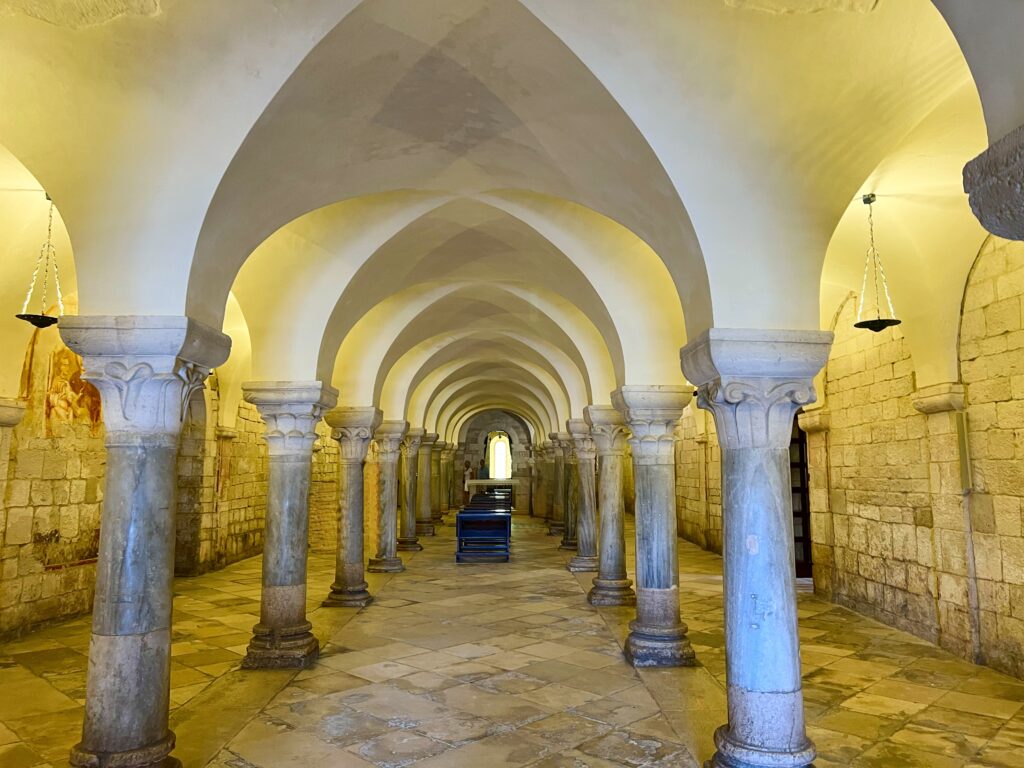
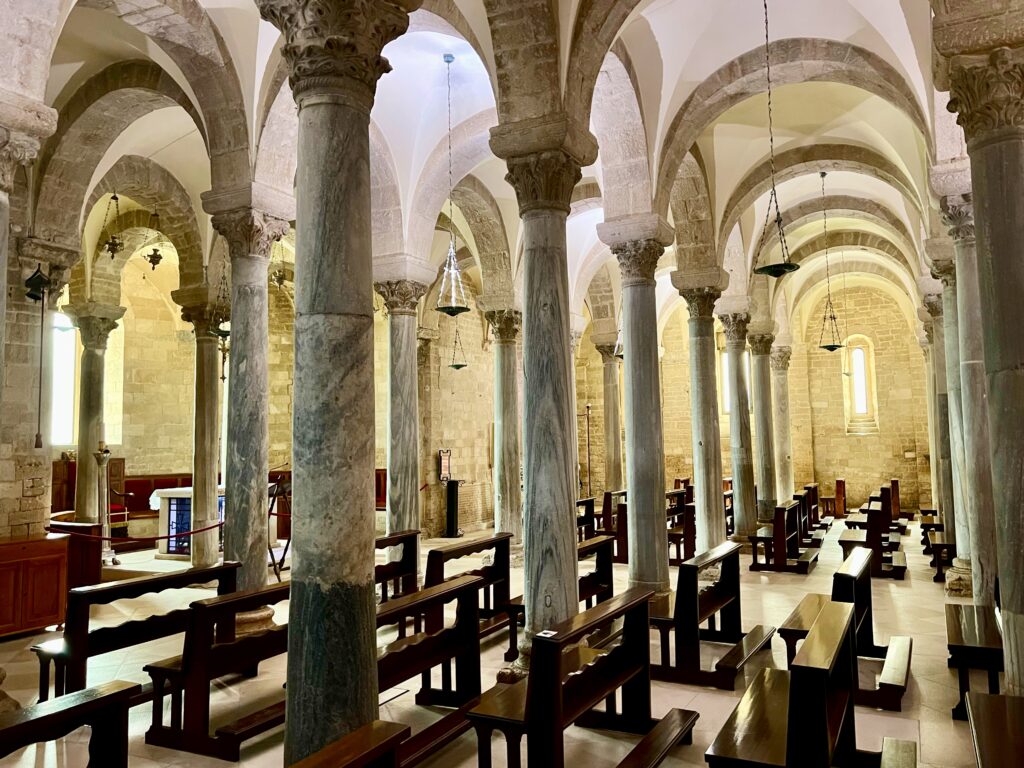
Frederick’s Fortress by the Sea
A short walk west along the sea wall leads to Castello Svevo, built by Frederick II in 1233 and completed by 1249. Rising directly from the sea it follows the emperor’s model of precise geometry and clarity: a classic quadrangular plan with robust corner towers, reflecting Byzantine and Arab military design. Later enhancements added a bastion and portico. The castle served as a prison until 1974, and today hosts exhibitions, concerts, and cultural events.
The Medieval and Baroque Cityscape
The old town shows two distinct building types. One is the medieval serial rowhouse, two or three storeys tall, with internal staircases and small courtyards. Along Via Beltrani, these were later crowned by grand 17th-century palaces, adding an aristocratic layer to the urban fabric.
Important landmarks include:
- San Giacomo, with a fine Romanesque portal.
- Palazzo Caccetta, a 15th-century merchant’s palace with diamond ashlar decoration.
- Church of Ognissanti, built by the Templars in the 12th century, with three naves, domes, and a striking apse.
- Santa Lucia and Sant’Antonio, churches with aligned domes and half-barrel vaulted aisles.
Centres of Worship and Trade
The second historic district developed from around 1100 around the Church of San Francesco and Piazza Marconi (formerly Platea rerum venalium). It grew through the 18th century, becoming the city’s commercial hub. Notable religious buildings include:
- San Francesco, a rare three-domed church.
- Sant’Andrea, a Greek-cross plan church of Byzantine origin.
- Santa Chiara, with Gothic and Baroque elements.
- Sant’Agostino, built in 1503.
Nearby Via Statuti Marittimi commemorates Trani’s 1063 Statuti Marittimi, the oldest maritime laws in Europe.
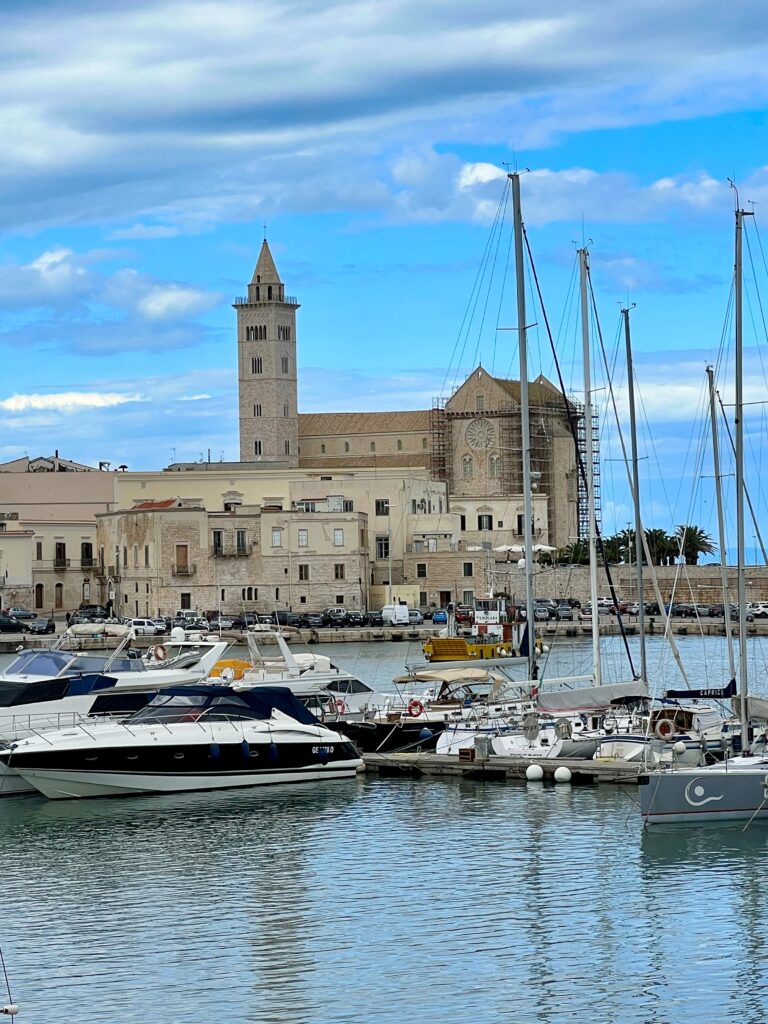
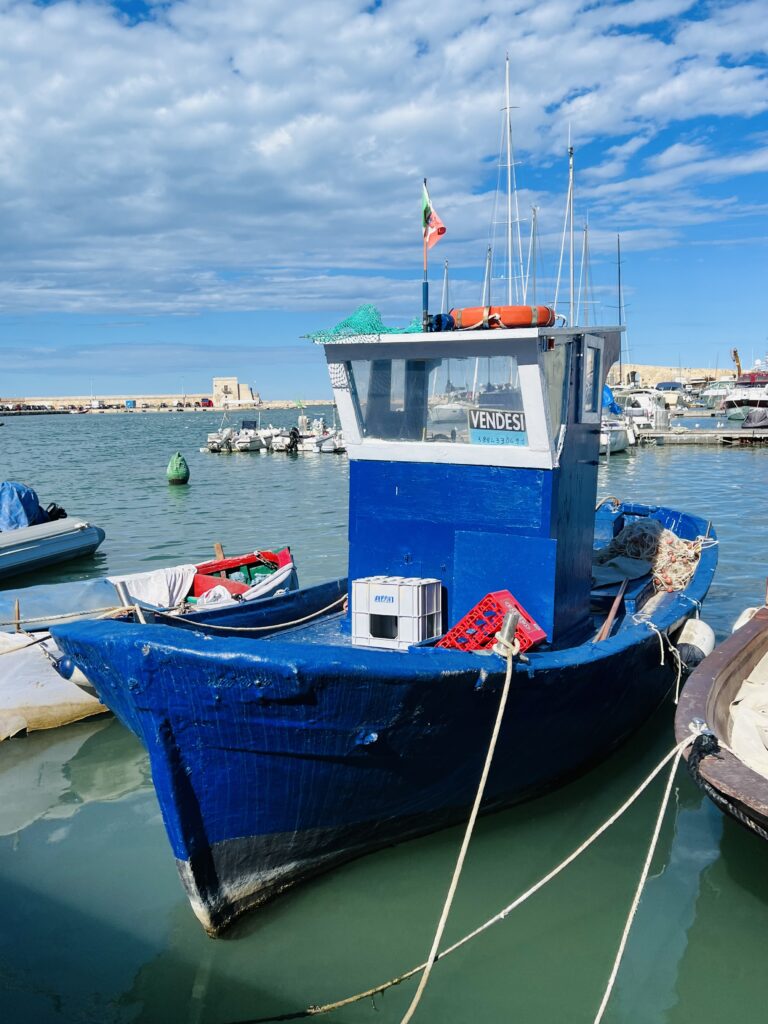
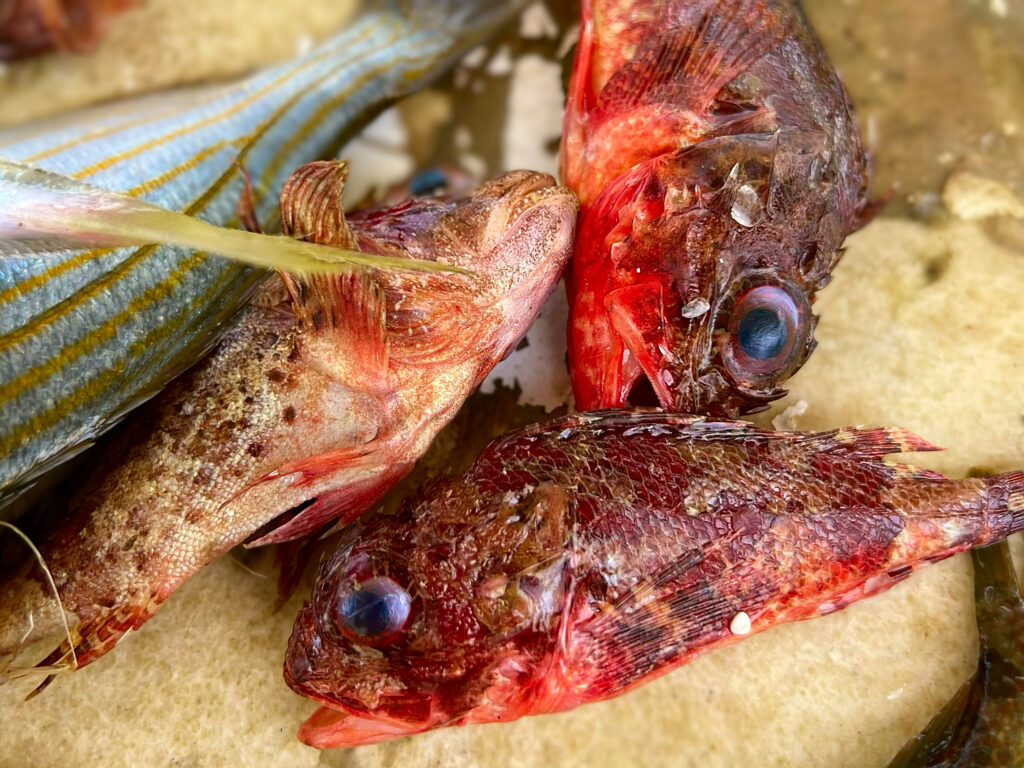
Transformation of the Southern Port
The southern port basin, long reserved for tanneries, arsenals, and saltpetre works, became residential only in the 18th century. A new merchant class built grand homes such as:
- Palazzo Di Gennaro
- Palazzo Palumbo
- Palazzo Antonacci (now the Carriage Museum)
The area is anchored by Via San Giorgio and connected to the commercial Via Cavour.
The Borgo and Beyond
The Borgo district, laid out in the 19th century, shows a formal unity. The borough’s charter required buildings to follow symmetrical, harmonious designs regardless of owner status. Variation lies in architectural details like cornices, doorframes, and balconies.
Just outside Trani, the Church and Monastery of Santa Maria di Colonna form part of a major Benedictine complex dating from the early 13th century. Its three naves feature Swabian groin vaults and chapels forming a secondary nave ending in a small domed sanctuary. A later sacristy includes a star vault in the advanced Gothic style.
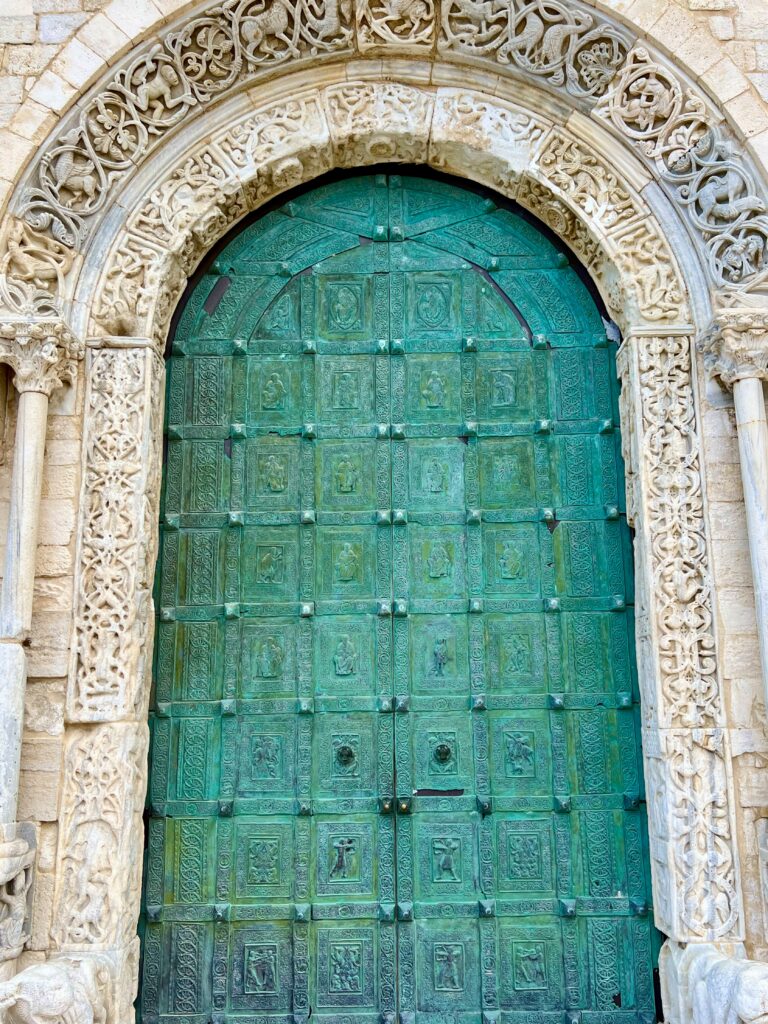
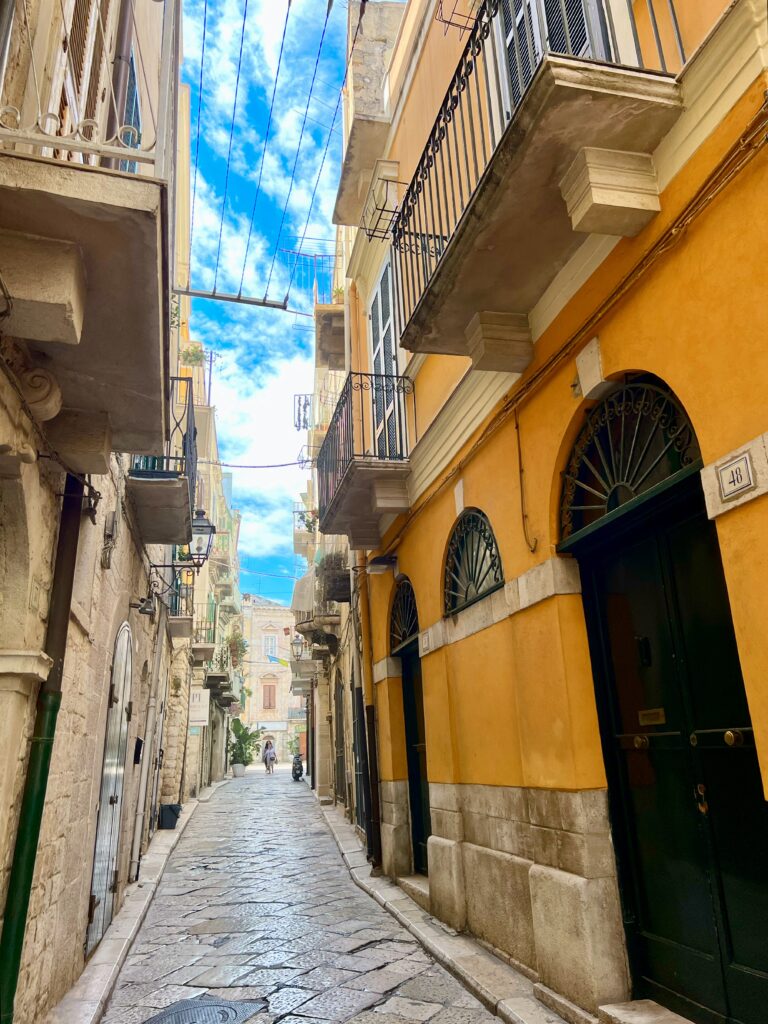
Jewish Heritage in Trani
Trani was once home to one of the most important Jewish communities in southern Italy. From the 9th to 14th centuries, its Giudecca flourished near the port and cathedral.
By the 12th century, Jews played central roles as physicians, notaries, translators, and merchants. Trani’s Jewish quarter was integrated into city life and boasted four synagogues.
Notable Highlights:
- Rabbi Isaiah ben Mali di Trani (c. 1180–c. 1250) was a major halakhic authority whose works influenced Jewish communities across Europe.
- Scolanova Synagogue: Built in the 13th century, converted into a church after 1380, and reconsecrated in 2006. One of Europe’s oldest functioning synagogues.
- Sant’Anna (Scola Grande): Now a museum documenting Trani’s Jewish past with preserved architectural features.
Following the Anjou conquest, Jewish persecution intensified. By 1380, Jews were expelled or forcibly converted, though some traditions survived through “Neofiti” (New Christians). Today, restored sites and growing interest have revived Trani’s Jewish heritage as a point of cultural discovery.
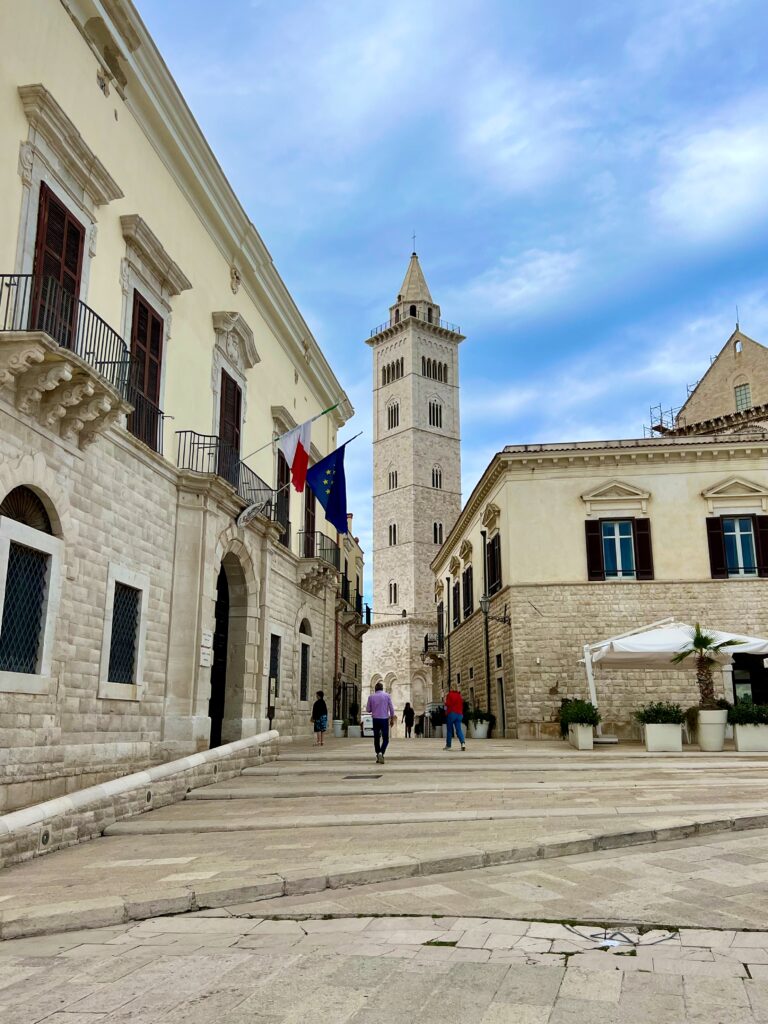
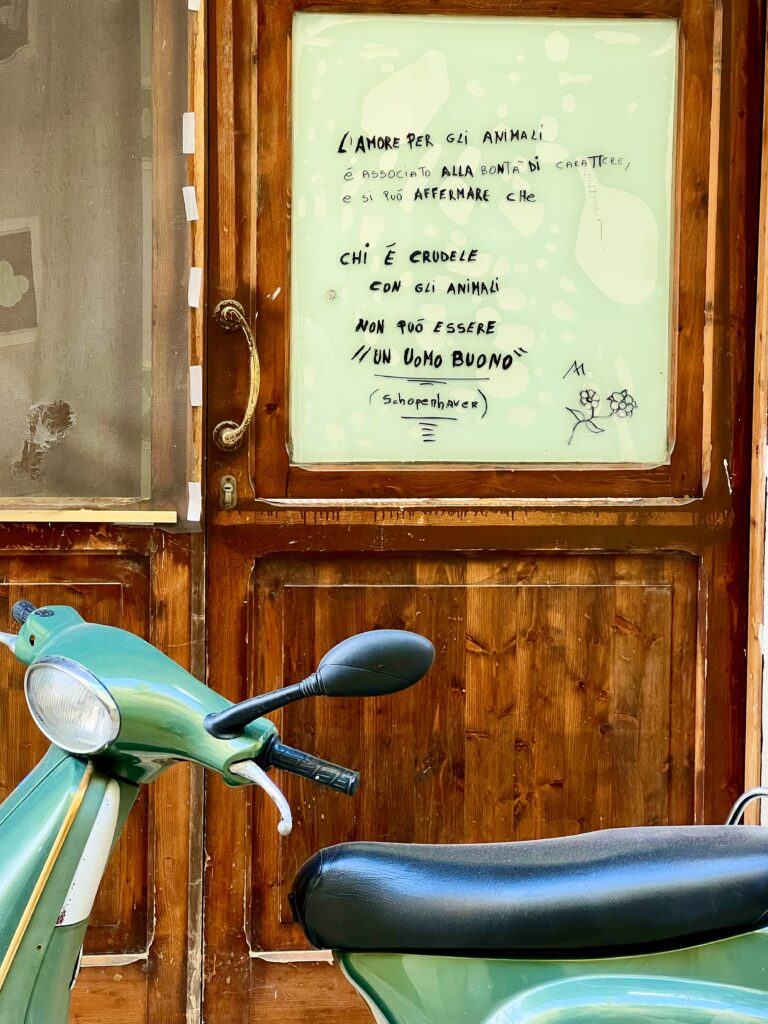
A Stroll Through the Historic Centre
Trani’s historic centre is a maze of medieval and Renaissance streets. Highlights include:
- Via Beltrani: Lined with 17th-century noble palaces.
- Palazzo Caccetta: A 15th-century residence built by a wealthy merchant.
- Church of Ognissanti: Once a Templar church, it features a Romanesque portico echoing the cathedral’s design.
- St Francis’ district: Once the city’s commercial core, it evolved into a lively market by the 18th century.
South of the harbour, the 18th-century district transformed from industrial to fashionable residential, blending heritage with modern vibrancy.

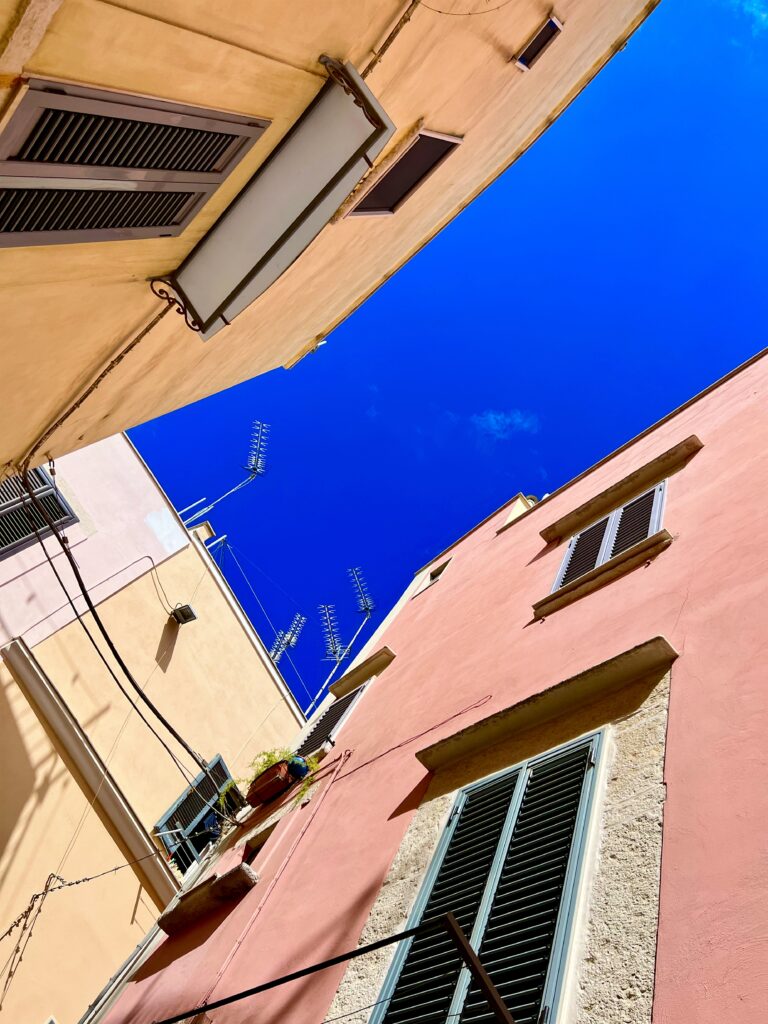
Points of Interest
- Cattedrale di Trani: Iconic Romanesque church on the sea.
- Castello Svevo: Medieval fortress with events and exhibitions.
- Porto di Trani: Lively harbour perfect for a sunset stroll or aperitivo.
- Centro Storico: Narrow cobbled lanes, artisan shops, and historic courtyards.
- Villa Comunale: Tranquil public garden with sea views and occasional concerts.
Where to Eat in Trani
Look out for handmade pasta with pistachio pesto at local trattorias. Pistachio will also find its way, inevitably, onto the desert menu!
Osteria Frangipane
Address: Via Maraldo da Trani, 5 – Tel. +39 349 6972155
Opening hours: Lunch and dinner – Closed Mondays
Seating: 30 indoors + 10 outdoors
Prices: €35–40 (excluding wine)
A modern, welcoming osteria run by siblings Ivan and Sara Lacalamita. Creative dishes made with top-quality local ingredients – standouts include risotto with fava beans, cozze pelose (hairy mussels), and Foggian pecorino cheese (or try the version with spring onion and baby squid), the bombette with creamy caciocavallo podolico and summer truffle, and the pork with purple potatoes and Leccino olives. Also recommended, the marinated anchovies with candied celery and cow’s milk ricotta, and the creamed salt cod and seared mackerel. Frangipane website.
Le Lampare al Fortino
Address: Piazzale Cristoforo Colombo, 8 – Tel. +39 0883 480308
Opening hours: Lunch and dinner – Closed Mondays
Seating: Elegant indoor dining + outdoor terrace with sea view
Prices: À la carte and tasting menus available
Refined Mediterranean dining inside Trani’s historic Fortino. Perfect for a romantic dinner or special occasion, with views of the cathedral and port. Expect elegant seafood dishes and impeccable service in a setting full of character. Le Lampare website.
Mānima
Address: Via San Giorgio, 16 – Tel. +39 388 5878998
Opening hours: Lunch and dinner – Closed Monday and Sunday evenings
Seating: 30 indoors + 30 outdoors
Prices: €30–45 (excluding wine)
A relaxed osteria with a view of the marina and cathedral. Father-and-son team Daniele and Manuele Monterisi focus on simple, honest cooking: try the raw seafood, grilled octopus, and classic riso, patate e cozze, the fusilloni pasta with mussels and cuttlefish, or fish cooked in a light seafood stew (guazzetto). Mānima website.
Paninart Trani
Address: Via Mario Pagano, 147 – Tel. +39 347 1551094
Opening hours: Lunch and dinner – Closed Mondays
Seating: Informal indoor and outdoor tables
Prices: €8–16 per panino
A cult favourite for gourmet panini, PaninArt combines local ingredients with imagination. Expect options like octopus with turnip greens or roast beef with stracciatella—and friendly service from owner Mimmo and his team. Great for a casual bite in the heart of Trani.
STARPOPS – l’osteria di Casa Sgarra
Address: Lungomare Cristoforo Colombo, 116 – Tel. +39 389 4930207
Opening hours: Lunch and dinner – Closed Tuesday and Sunday evenings
Seating: 40 indoors + 40 outdoors
Prices: €35–45 (excluding wine)
Run by the Sgarra brothers, this seafront bistrot blends family tradition, modern flair and a vibrant outdoor terrace. Chef Felice Sgarra crafts standout dishes like pancotto with cime di rapa, maltagliati pasta in a seafood broth, Run by the Sgarra brothers, this seafront bistrot blends family tradition and modern flair. Chef Felice Sgarra crafts standout dishes like pancotto with cime di rapa, seafood maltagliati, traditional riso, patate e cozze (rice, potatoes and mussels) and pork with truffle. Great desserts too. The ricotta cannolo with chocolate and pistachio is worth saving room for. Slow Food Osterie d’Italia recommended. STARPOPS website.
Quintessenza (Michelin-starred)
Address: Via Lionelli, 44 – Tel. +39 0883 880948
Opening hours: Lunch and dinner – Closed Sundays and Mondays
Seating: Elegant indoor dining only
Prices: Tasting menus from €90
The Place
Trani’s only Michelin-starred restaurant, Quintessenza is helmed by the Di Gennaro brothers, who have turned this fine-dining destination into a benchmark of culinary elegance. Minimalist interiors let the cuisine take centre stage. Attentive service without being fussy. Quintessenza website.

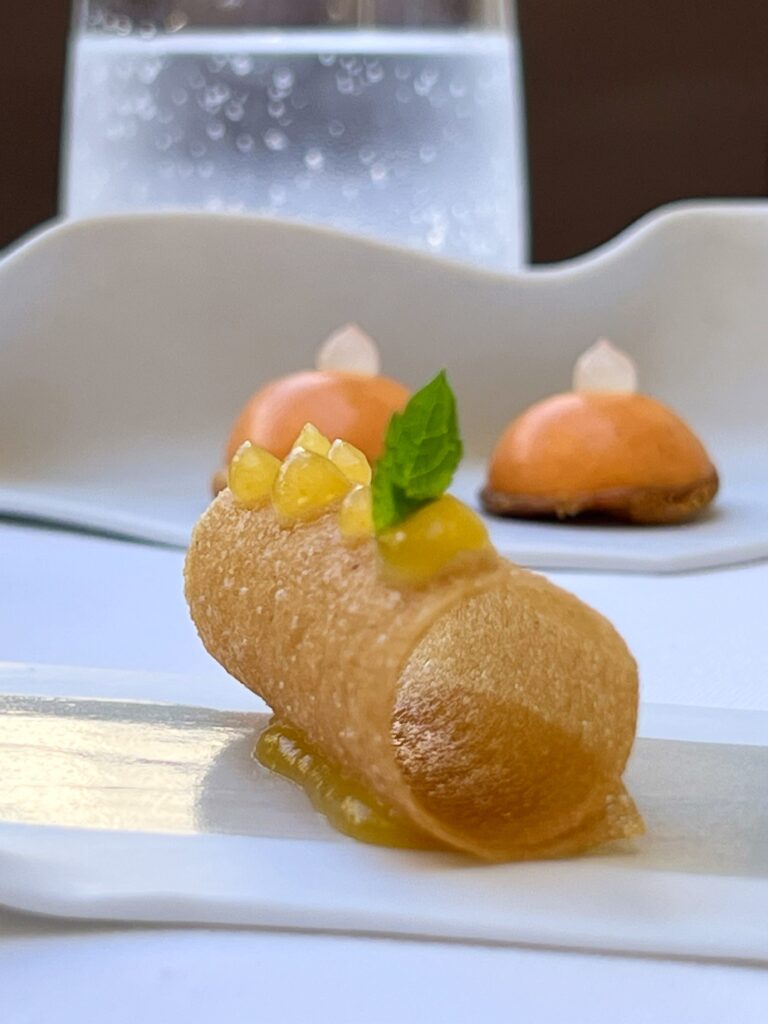
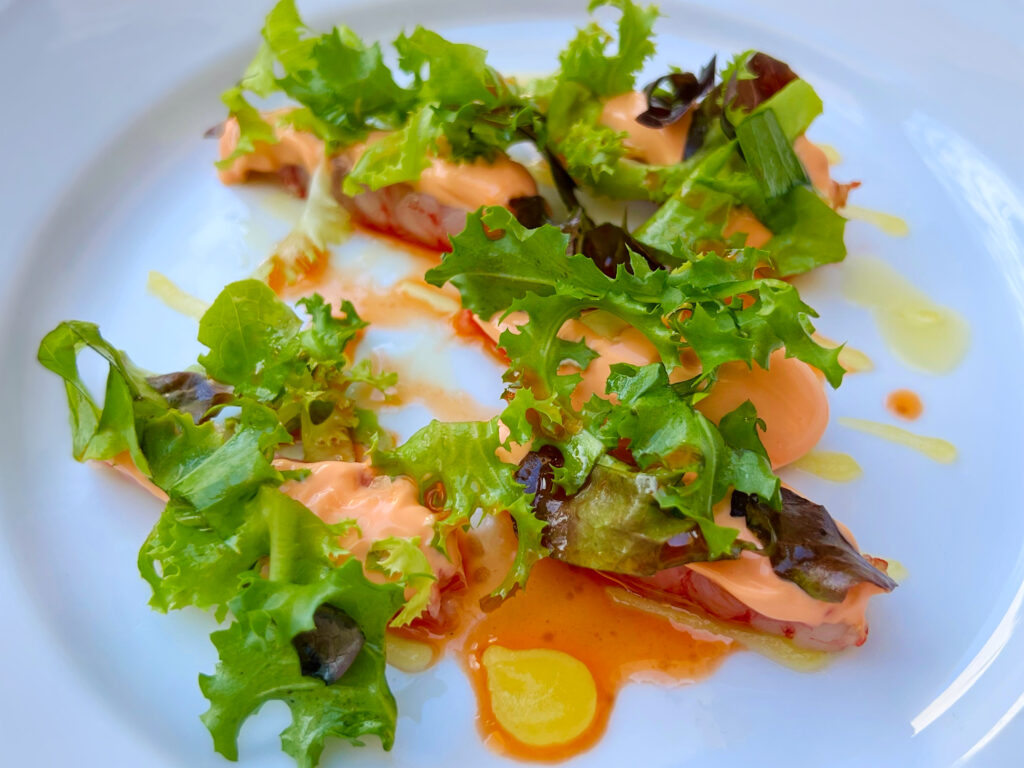

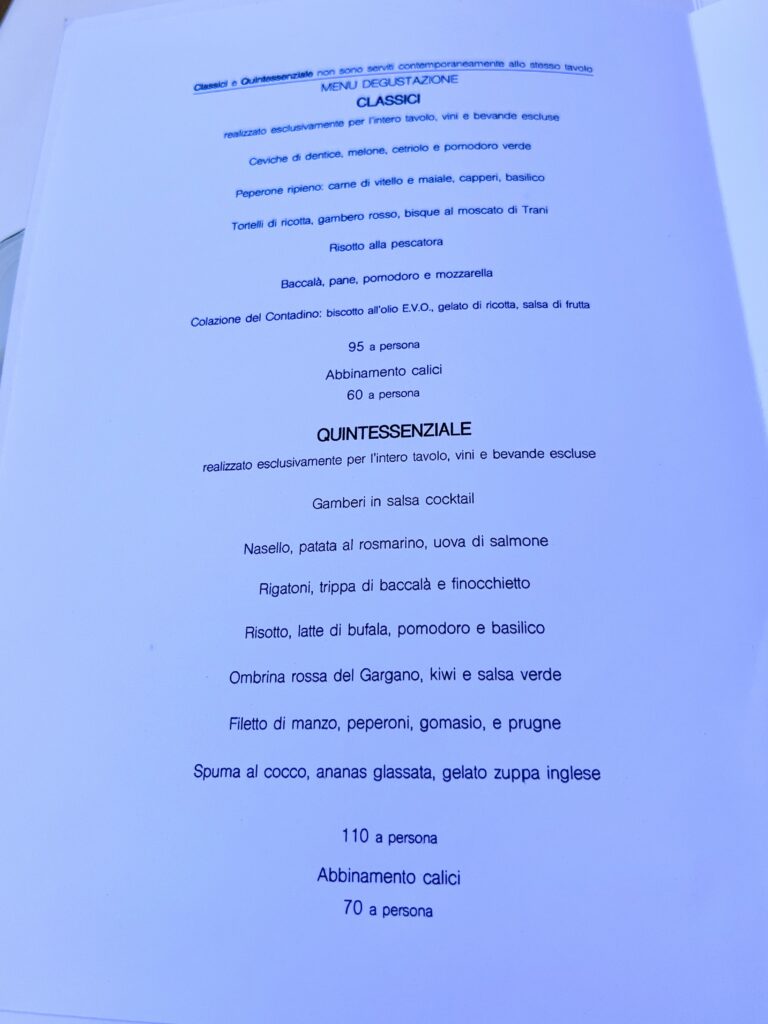
Trani blends centuries of layered history with Adriatic beauty, combining cultural richness and coastal charm.

